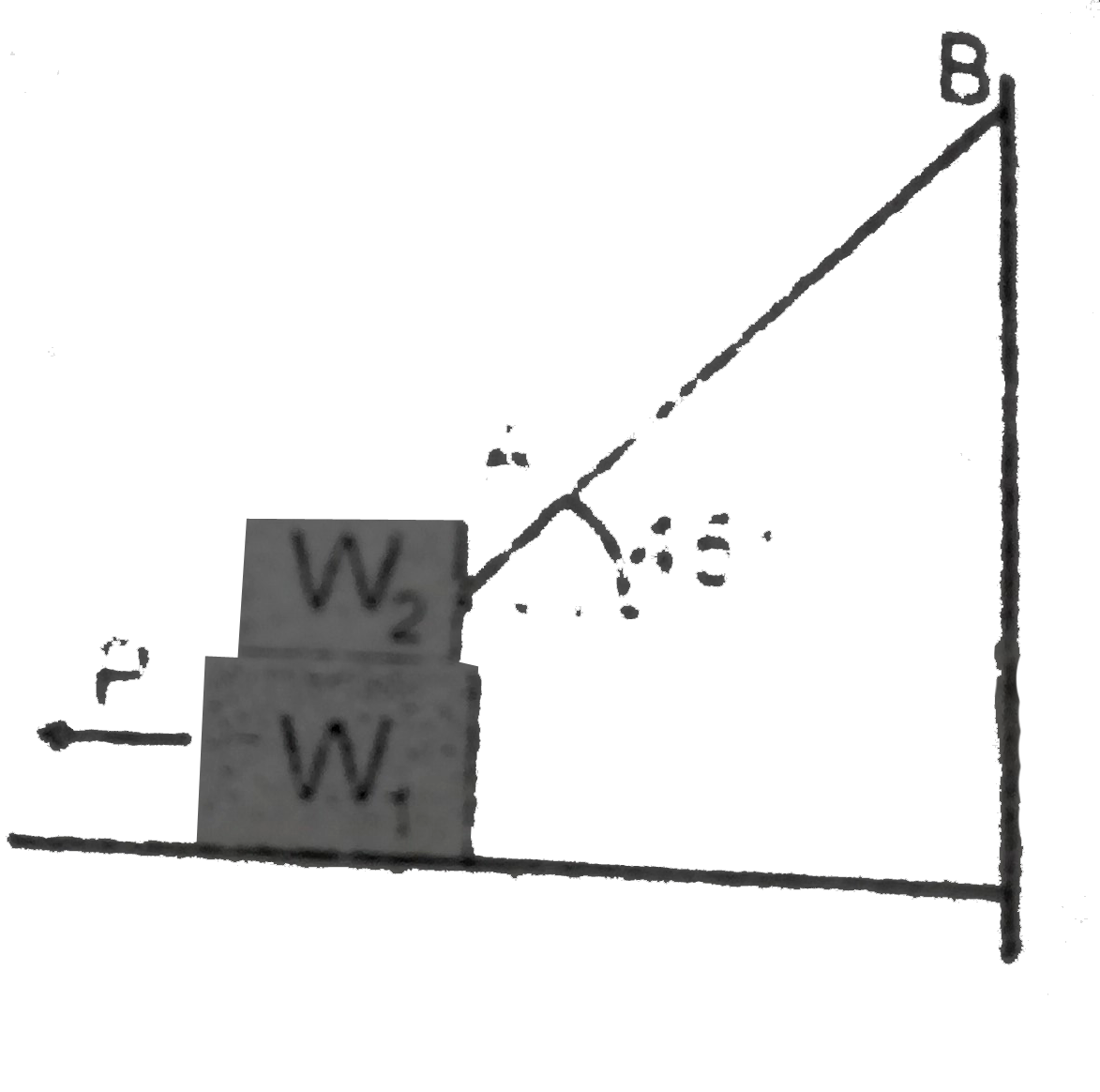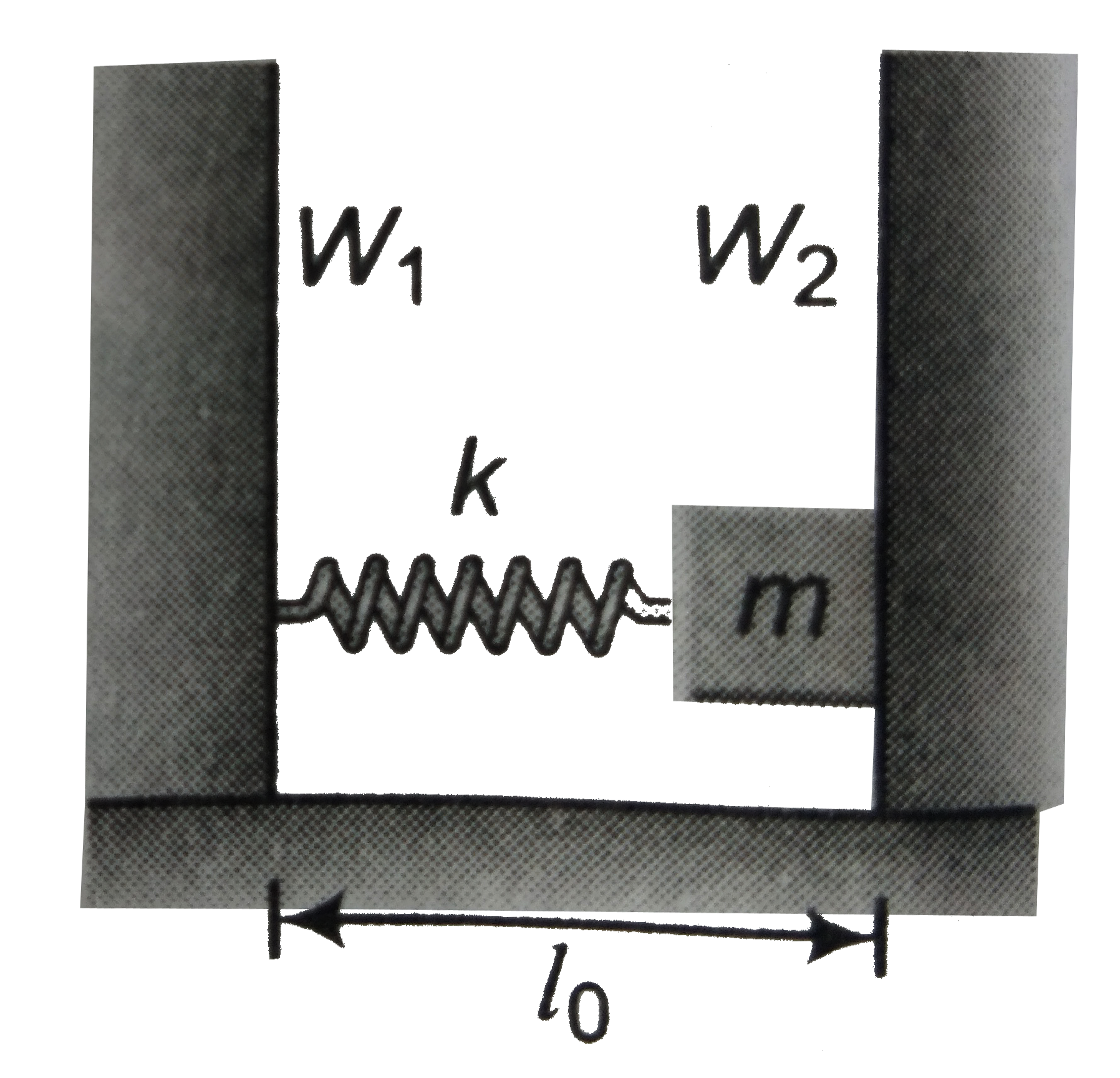In the arrangement shown, W1=200N,W2=100N,μ=0.25 for all surfaces in contact. The block W1 just slides under the block W2

A pull of 50N is to be applied on W1
A pull of 90N is to be applied on W1
Tension in the string AB is 10√2N
Tension in the string AB is 20√2N
The correct Answer is:B, D
B,D

For W2:
N2+Tsin45∘=W2=100….(1)
Tcos45∘=0.25N2….(2)
⇒T=20√2N,N2=80N

For W1:
P=0.25(N1+N2)...(3)
N1+W1=N1....(4)
=N1=280N
Topper's Solved these Questions
- DAILY PRACTICE PROBLEMSBOOK - RESONANCE ENGLISHCHAPTER - DAILY PRACTICE PROBLEMSEXERCISE - dpp 34
5 Videos
- DAILY PRACTICE PROBLEMSBOOK - RESONANCE ENGLISHCHAPTER - DAILY PRACTICE PROBLEMSEXERCISE - DPP 35
5 Videos
- DAILY PRACTICE PROBLEMSBOOK - RESONANCE ENGLISHCHAPTER - DAILY PRACTICE PROBLEMSEXERCISE - dpp 32
8 Videos
- CURRENT ELECTRICITYBOOK - RESONANCE ENGLISHCHAPTER - CURRENT ELECTRICITYEXERCISE - Exercise
53 Videos
- ELASTICITY AND VISCOCITYBOOK - RESONANCE ENGLISHCHAPTER - ELASTICITY AND VISCOCITYEXERCISE - Advanced Level Problems
9 Videos
Similar Questions
Knowledge Check
If R1andR2 are filament resistances of a 200 W and a 100 W bulb respectively, designed to operate on the same voltage, then :
AR1=R2BR2=2R1CR2=4R1DR1=4R2
A block of mass 10kg is placed on a horizontal surface as shown in the figure and a force F=100N is applied on the block as shown, in the figure. The block is at rest with respect to ground. If the contact force between block and ground is 25n (in Newton) then value of n is : (Takeg=10m/s2)

View SolutionThe relative density of a material of a body is found by weighing it first in air and then in water. If the weight of he body in air is W1=8.00±N and the weight in water is W2=6.00±0.05N, then the relative density ρr=W1/(W1−W2) with the maximum permissible eror is
View SolutionThe cathode of a photoelectric cell is changed such that the work function changes from (W1→W2(W2>W1). If the current before and after change are I1 and I2, all other conditions remaining unchanged , then (assuming hv>W2)
View SolutionIn the figure, the block B of mass m starts from rest at the top of a wedge W of mass M. All surfaces are without friction. W can slide on the ground. B slides down onto the ground, moves along it with a speed v, has an elastic collision with the wall, and climbs back on to W.

View SolutionIn the figure shown, a spring mass system is placed on a horizontal smooth surface in between two vertical rigid walls W1 and W2. One end of spring is fixed with wall W1 and other end is attached with mass m which is free to move. Initially, spring is tension free and having natural length l0. Mass m is compressed through a distance a and released. Taking the collision between wall W2 and mass m as elastic and K as spring constant, the average force exerted by mass m on wall W2 in one oscillation of block is

View SolutionTwo weights W1 and W2 in equilibrium and at rest, are suspended as shown in figure. Then the ratio W1W2 is :

View SolutionIn a given figure system is in equlibrium, If W1= 300 N. Then W2 is approximately equal to

View Solution


